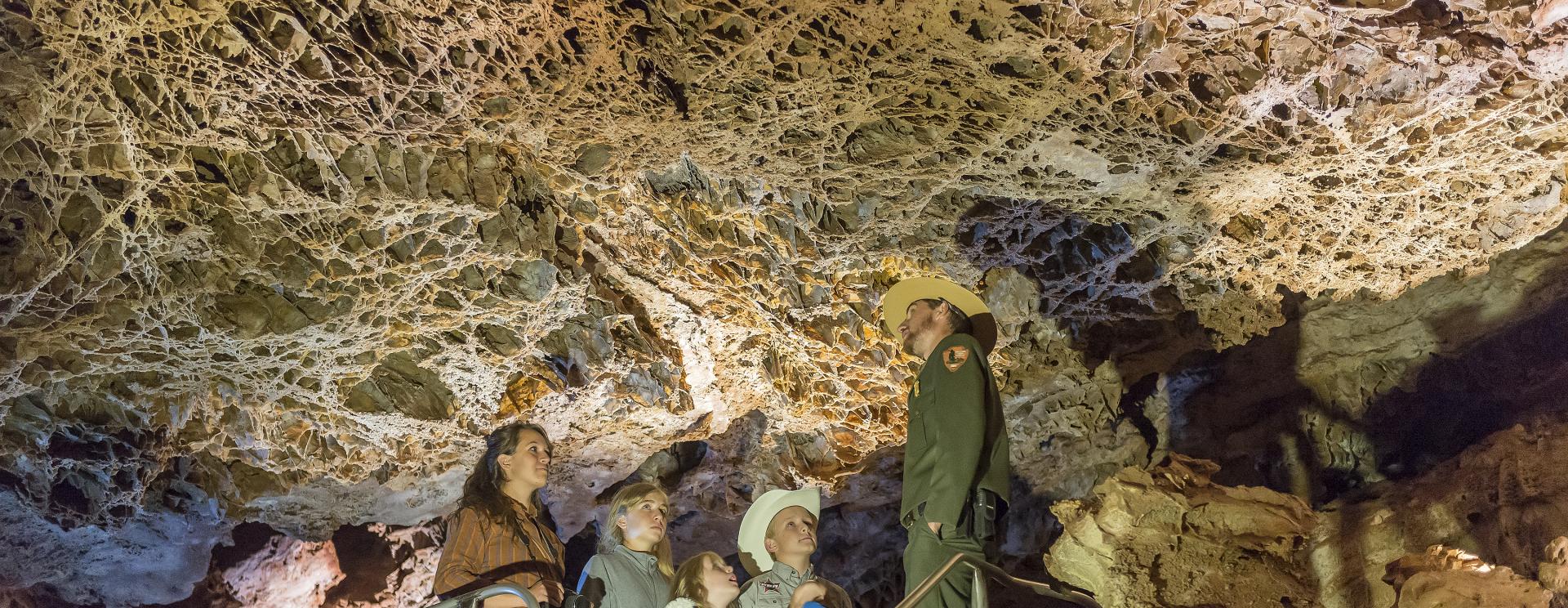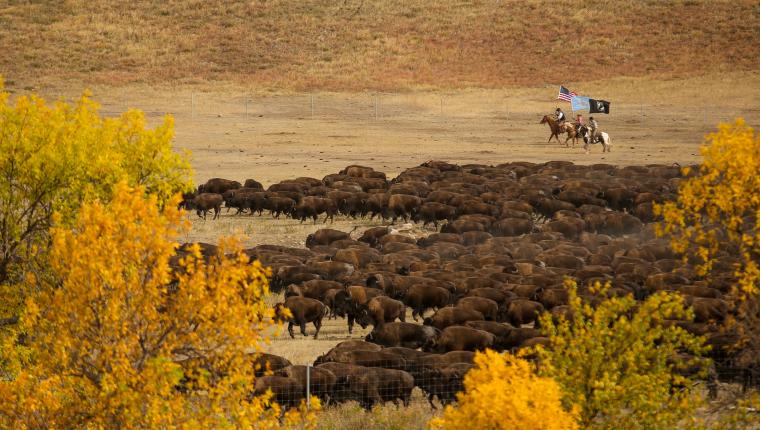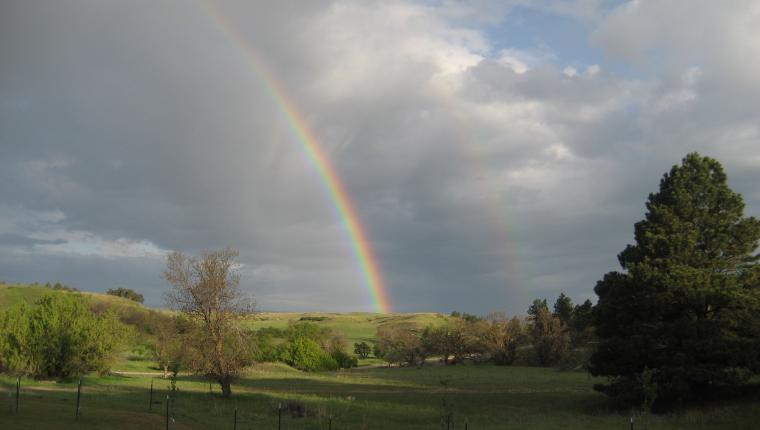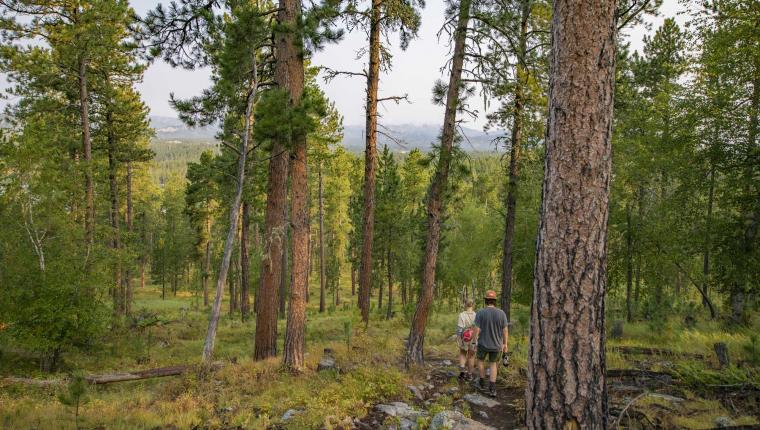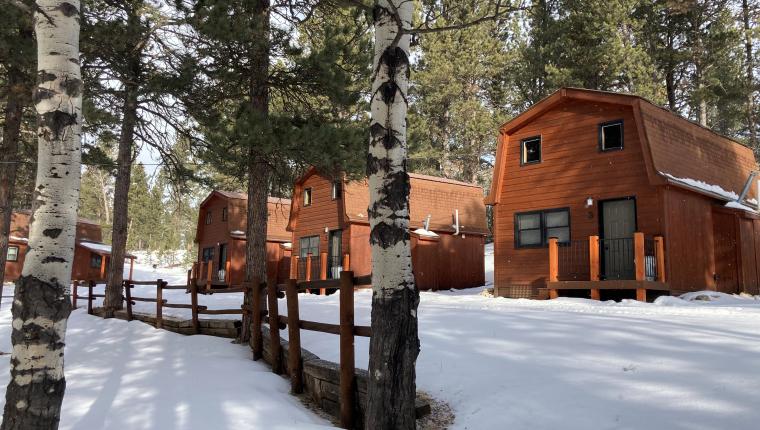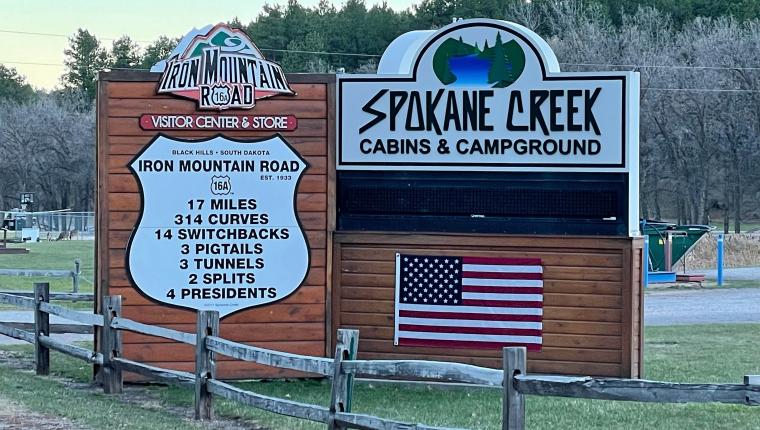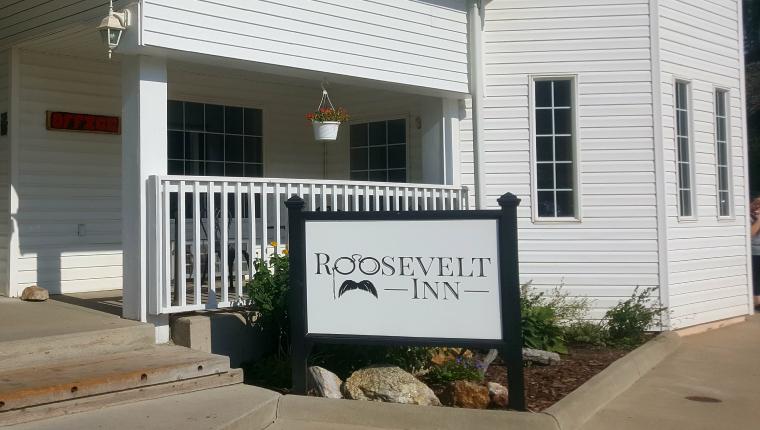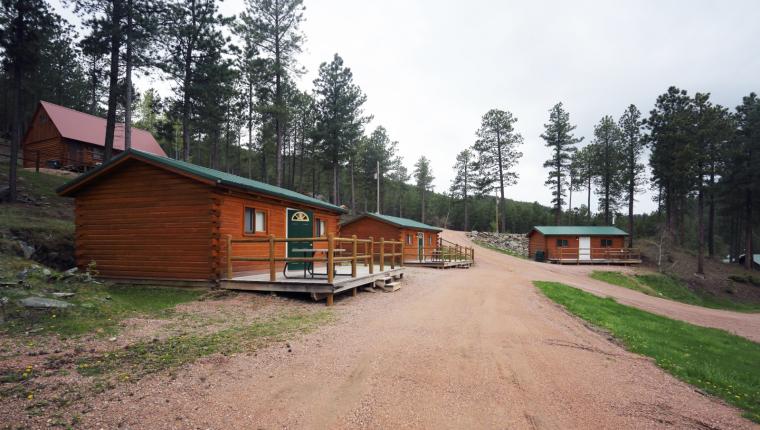We live in an age when satellites have mapped the topography of the earth’s surface, from the summits of our tallest mountain peaks to the watery depths of our massive oceans. But, far below the ponderosa pine forests and alpine meadows of the Black Hills lies an underground wilderness so vast that contemporary explorers are only now beginning to understand its scope and complexity.
![[node:title]](/sites/default/files/styles/bhb40_1_column/public/photos/blog/2018/11/7128/jeca5.jpg?itok=-a-bqJYT)
For many, the subterranean labyrinths such as those found in the Black Hills have become one of the last frontiers on earth and a dark mystery in an uncharted terrain. And remarkably, this ancient mountain range is home to the second and third longest caves in the country.
When it’s raining or snowing in the Black Hills, or even in the middle of a summer heat wave, caves present a constant climate and an exceptional adventure into a region that is still relatively unknown.
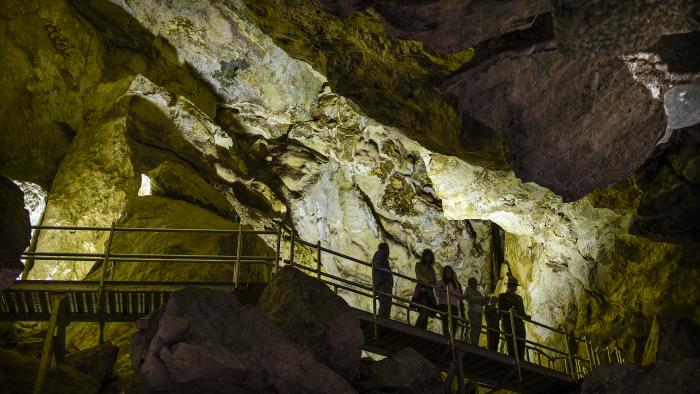
Less than 10 of the National Park Service’s 400 units offer cave tours, even though many NPS sites have cave resources. Two of those that do – Jewel Cave National Monument and Wind Cave National Park – are found right here in the playground known as the Black Hills.
“Caves appeal to people on many levels,” said Tom Farrell, chief of interpretation at Wind Cave National Park, the first cave resource ever protected by the federal government. “Where else can someone go and discover a room no one else has ever been in before?
“They are one of the world's last remaining unexplored frontiers,” Farrell told me last week. “Caves are mysterious. The darkness that is always lurking just outside the boundaries of your lights can seem both scary and enticing. They are also great places to learn about science and the stories of intrepid explorers.”
More than 120 years ago, a teenager named Alvin McDonald, began exploring the deepest recesses of Wind Cave. Soon after McDonald began his quest to chart the fissures and caverns in the Southern Hills cave in the 1890s, he admitted to his diary, “Have given up the idea of finding the end of Wind Cave."
And virtually every caver since would agree with McDonald’s sentiment.
In fact, barometric wind studies conducted by the U.S. Geological Survey, as well as other research, indicate that mapped passageways to date constitute less than 5 percent of what actually exists in Jewel and Wind caves.
As it stands, Wind Cave’s passageways measure 149 miles long, ranking it as the third longest cave in the U.S. Meanwhile, just up the road west of Custer, Jewel Cave’s corridors total 199.08 miles, placing it second longest in the country. With more than 400 miles of surveyed passageways, Kentucky’s Mammoth Cave is the world’s longest cave system. But, explorers starting mapping its passageways before the Civil War, decades before intrepid cavers started searching the Black Hills caves.
Look Into the Depths
Three decades ago, when I was far skinnier and searching for any new adventure, I accompanied several experienced cavers into the depths of Wind Cave to research a story. On that four-hour journey, we slid on our bellies like rattlesnakes to traverse a narrow 30-yard slit in the rock, and stood in awe (and complete darkness) in the Club Room, some eight stories high and 200 yards long, and listened to only our breath and the tinkling of water dripping from some high, unseen precipice.
Those cavers measured passageway that day that moved Wind Cave from eighth to seventh longest in the world. But what I still recall all these years later was standing in that remote corridor, my helmet lamp lighting the surveyors as they did their work, and thinking, “It’s highly likely that we are the first humans to ever step foot on this rugged and remote underground landscape.”
As I considered that simple assessment, I reached down and turned over an unremarkable rock. On its underside, I discovered dozens of 5-inch-long dogtooth spar crystals that twinkled in my lamplight. Even 30 years later, the thought still sends chills down my spine.
Everyone has a different reaction to caves, according to my friend Tom Farrell.
“Caves are like people,” he said. “They're all a little different and each has their own story to tell. Geologically, Wind Cave is famous for its length, complexity (it's probably the most complex maze cave in the world), and its boxwork cave formation. Many people come here expecting to see formations like stalactites and stalagmites, but instead they see boxwork, a honeycombed calcite formation hanging from the walls and ceilings.”
A Jewel of a Cave
Nearly 80,000 visitors enter the 49-degree Jewel Cave during a typical year, taking part in tours ranging from nature talks and lantern walks to four-hour-long Wild Cave adventures (reservations are highly recommended).
Along the way, they’re treated to some of the most rare cave specimens in the world, including a maze of unusual box work, frostwork and popcorn formations, as well as more common stalactites, stalagmites and calcite crystals. Dozens of exceedingly rare hydromagnesite balloons – “fragile, silvery little bubbles” – that would pop from the mere touch of a finger, are found within Jewel and Wind caves.
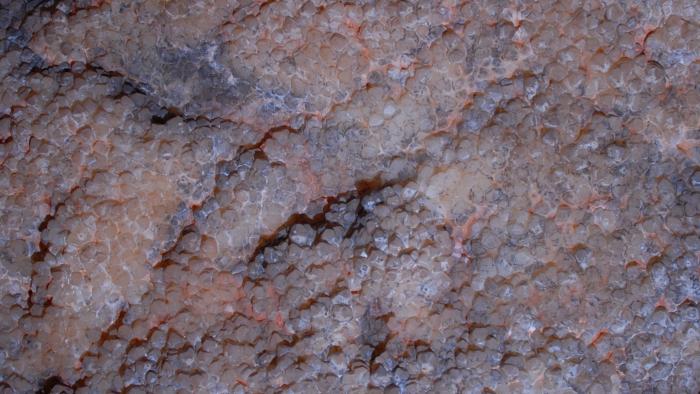
Exploration of Jewel Cave began around 1900 when prospectors Frank and Albert Michaud, joined by friend Charles Bush, heard wind gushing through the rocks in Hell Canyon. Discovering a cave full of sparkling crystals, the trio unsuccessfully attempted to turn the cave into a tourism attraction. In 1908, President Theodore Roosevelt protected the unique resource by establishing Jewel Cave National Monument.
Fifty years later, cavers Herb and Jan Conn began a two decade-long exploration of Jewel Cave that logged more than 6,000 hours and 708 trips into the quiet darkness beneath the Black Hills. The Conns’ efforts revealed one of the most extensive and complex cave ecosystems in the world, laced with scientific wonders and scenery few humans had ever encountered.
“The excitement of discovery, the elation and despair. The thrill of pushing forward to discover what is there,” Jan Conn wrote in 1975.
Feel the Wind
Just 19 miles south rests Wind Cave National Park, with 33,851 acres of pine forests, creek-carved canyons and rolling grasslands. In 2012, the park was expanded by 5,556 acres with acquisition of an historic homestead ranch dating to 1881 and a prehistoric buffalo jump dating to 1030 A.D. Established in 1903 by President Roosevelt as the seventh national park in the country, it was the first created to protect an underground resource. And what a resource it is.
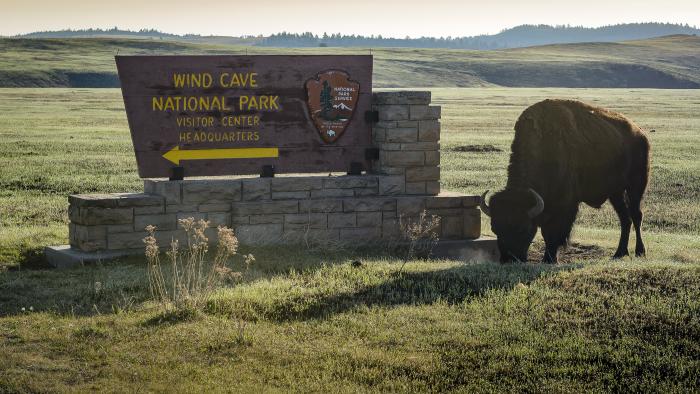
Above ground, more than 400 bison and 900 elk roam the woodlands and grasslands. Below the park’s surface lies an incredible maze of passageways.
“We have two world-class caves right in our backyard. What makes Wind Cave unique is the complexity of the system,” Farrell said. “All the passageway is under just 1.2 square miles of the surface.”
Farrell says the cave’s constant environment of 53 degrees makes Wind Cave a year-round attraction. The fact that it’s still largely unexplored makes it an intriguing mystery.
“What has always intrigued me about Wind Cave is its natural opening,” Farrell says. “With a change in barometric pressure you can hear a deep, moaning sound that gives you a sense that there’s something large down there. The history of the exploration of Wind Cave is filled with the discovery of multiple holes that have led to miles of passageway. As long as we have one hole that’s unexplored, there’s a potential for many more miles of cave.”
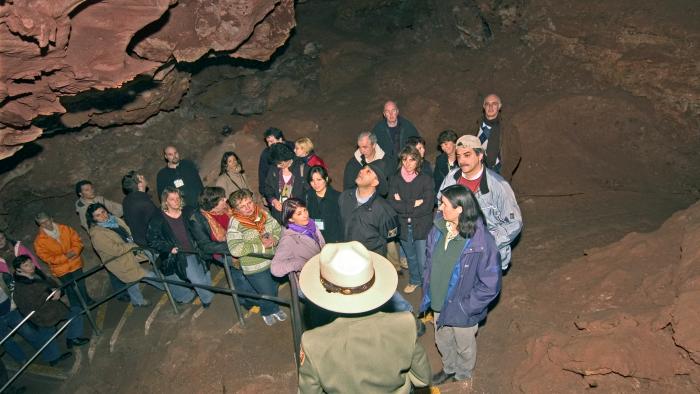
Planning Your Trip
To learn more about these two remarkable caves and to check out winter tour schedules, go to www.nps.gov/jeca or www/nps.gov/wica. For cave tour reservations, call Wind Cave at 605/745—4600, and Jewel Cave at 605/673—2288.
